Top 3 Takeaways
Introduction
Few things are more concerning to a pet owner than seeing their dog limp. Whether the limp develops suddenly or gradually over time, it often leaves owners asking, “Why is my dog limping?” and “Should I take them to the vet?”
At Bliss Animal Hospital, our veterinarians evaluate hundreds of dogs each year for limping and lameness. We know how distressing this symptom can be for owners and how complex the diagnostic process can be. Lameness is not a diagnosis in itself; it is a sign of an underlying problem that may range from a mild injury to a severe orthopedic, neurologic, or systemic disease. Moreover, dogs are skilled at masking discomfort, which means even a subtle limp may warrant medical attention.
In this comprehensive guide, our veterinary team explains what causes limping and lameness in dogs, when to seek veterinary care, how we approach diagnosis and treatment, and what pet owners can do to support their dog’s recovery.
What Is Lameness in Dogs?
Lameness refers to any abnormality in a dog’s gait or movement pattern that arises from discomfort, weakness, or mechanical dysfunction in a limb. It can affect one or multiple legs and may present as subtle stiffness or as complete non-weight-bearing on a limb. Veterinary professionals classify lameness according to its severity, duration, and underlying cause. Importantly, lameness is not a diagnosis but rather a clinical sign that requires further investigation.
There are several forms of lameness:
One important distinction is between mechanical lameness, which results from structural problems in the musculoskeletal system (such as joint instability or fractures), and neurological lameness, which stems from nerve dysfunction affecting limb movement and coordination.
Understanding this distinction is key because treatment varies greatly depending on the underlying cause. Veterinary evaluation is essential to differentiate between the many possible contributors to a dog’s limp and to guide appropriate care.
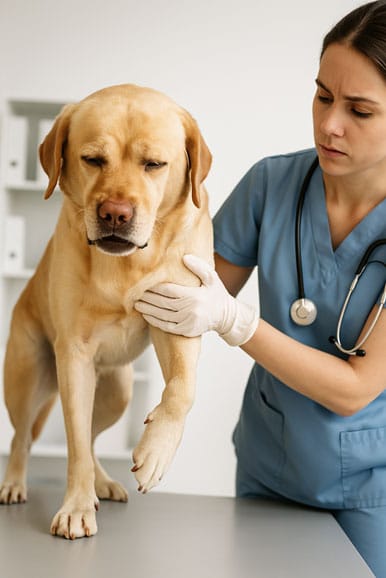
Figure 1: A veterinarian carefully examines a dog’s front leg for signs of limping and lameness, assessing potential orthopedic or neurological causes of the abnormal gait.
Why Is My Dog Limping?
Limping is one of the most common reasons that dog owners bring their pets to the veterinarian. It can occur at any age and in any breed, though certain conditions are more prevalent in particular populations. The question “Why is my dog limping?” rarely has a simple answer because many factors must be considered: the dog’s age, breed, activity level, medical history, and the characteristics of the lameness itself.
Dogs may limp for a variety of reasons, including:
Importantly, some dogs may limp without outward signs of pain, leading owners to mistakenly believe that the issue is minor or self-resolving. However, a limp without visible pain can still indicate joint instability, progressive arthritis, nerve dysfunction, or even serious underlying disease.
A veterinary exam is the best way to ensure that your dog’s limp is properly evaluated and that any underlying issues are addressed early, before complications arise.
Common Causes of Dog Limping and Lameness
When a dog presents with lameness, veterinarians follow a systematic process to narrow down potential causes. The origin of lameness may be orthopedic, neurological, infectious, inflammatory, or traumatic. Below, we review some of the most common categories.
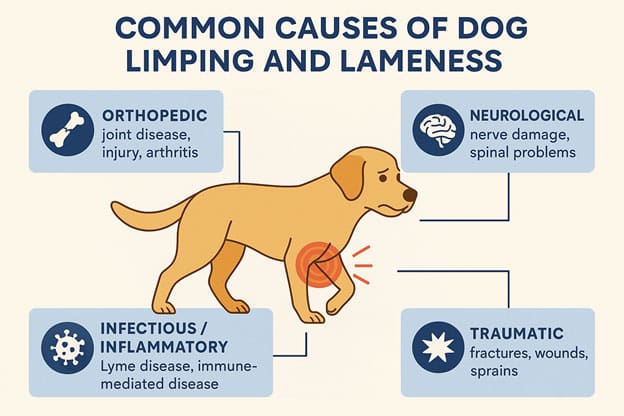
Figure 2: Infographic summarizing common causes of dog limping and lameness, including orthopedic, neurological, infectious, inflammatory, and traumatic conditions.
Orthopedic Causes
Orthopedic injuries and diseases are among the leading causes of lameness in dogs. These include:
Orthopedic conditions may cause acute or chronic lameness, and severity varies depending on the degree of injury or degeneration. Early diagnosis is critical to prevent progression, especially in conditions like CCL tears and dysplasia where surgical intervention can restore function and prevent arthritis.
Neurological Causes
Neurological lameness occurs when nerve dysfunction impairs a dog’s ability to move a limb properly. Causes include:
Neurological lameness may manifest as weakness, stumbling, dragging of the paw (knuckling), or an abnormal gait without overt pain. These cases often require advanced diagnostics, such as MRI or CT imaging.
Infectious and Inflammatory Causes
Several infectious and immune-mediated diseases can cause lameness in dogs. Notable examples include:
These diseases are often accompanied by systemic signs, such as fever, lethargy, and appetite changes. Laboratory testing is essential to confirm the diagnosis, and treatment typically involves antimicrobial or immunosuppressive therapy.
Traumatic Causes
Obvious trauma, such as a fall or vehicular accident, can result in fractures, joint dislocations, or severe soft tissue damage. However, minor trauma, such as rough play or jumping from a height, can also lead to subtle injuries that cause lameness.
Owners should be aware that even when no external injury is apparent, internal damage may still exist. Prompt veterinary evaluation is critical when trauma is suspected.
My Dog Is Limping but Shows No Sign of Pain — Should I Worry?
This is one of the most frequently asked questions we receive. Dogs are remarkably adept at concealing discomfort, a survival trait inherited from their wild ancestors. Just because a dog is not crying, whining, or visibly distressed does not mean they are not experiencing pain or dysfunction.
A limp, by definition, means that a dog is altering its movement due to discomfort, weakness, or mechanical limitation. The absence of vocalization should not be taken as reassurance. In fact, chronic orthopedic conditions, such as arthritis or ligament instability, often produce lameness without overt signs of acute pain.
Neurological causes of lameness may also result in abnormal gait patterns without clear pain signals. Similarly, infectious and inflammatory diseases may cause joint discomfort that is difficult for owners to interpret.
If your dog is limping, even subtly, and the issue persists for more than 24 to 48 hours, or worsens over time, a veterinary evaluation is warranted. The earlier a problem is identified, the more effective treatment is likely to be.
When to See the Vet for a Limping Dog
Determining when to seek veterinary care is crucial to ensuring your dog receives appropriate treatment in a timely manner. Here are general guidelines:
Seek IMMEDIATE veterinary attention if:
Schedule veterinary evaluation soon if:
Monitor cautiously if:
When in doubt, it is always better to err on the side of caution and consult your veterinarian. Delaying care can lead to unnecessary pain and more complex treatment later.
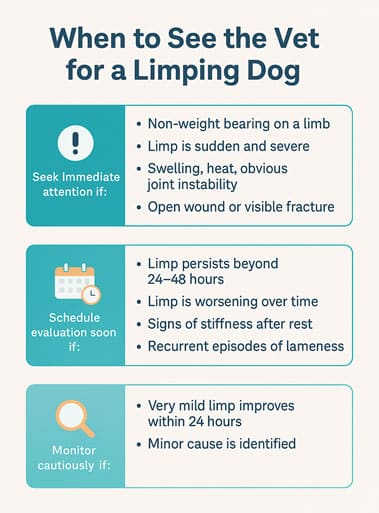
Figure 3: Infographic outlining when to seek veterinary care for a limping dog, including urgent signs, indicators for timely evaluation, and situations where cautious monitoring may be appropriate.
How Veterinarians Diagnose Dog Limping and Lameness
Diagnosing the cause of lameness requires a thorough and systematic approach. At Bliss Animal Hospital, we typically begin with a detailed history and physical examination, followed by targeted diagnostic tests.
The process may include:
Identifying the precise cause of your dog’s lameness allows us to tailor treatment appropriately, improving outcomes and enhancing your dog’s quality of life.
How to Treat a Limping Dog at Home (Safely)
While professional veterinary care is essential for most causes of lameness, supportive care at home can aid your dog’s comfort and recovery.
Safe at-home care includes:
Do NOT:
Proper management at home complements professional care, helping your dog recover safely and effectively.
Veterinary Treatment for Dog Limping
Treatment depends entirely on the underlying cause of the lameness. Options may include:
Our veterinary team will work with you to create a customized treatment plan tailored to your dog’s needs, ensuring the best possible outcome.
Conclusion
Lameness and limping are not problems to ignore or “wait out.” They are signs that something is affecting your dog’s ability to move comfortably and safely. Prompt veterinary evaluation and appropriate treatment can make all the difference in preserving your dog’s health and quality of life.
At Bliss Animal Hospital, we are proud to help dogs across Lake Forest, Irvine, Rancho Santa Margarita, Mission Viejo, Tustin, Laguna Woods, Laguna Hills, and Ladera Ranch overcome lameness and return to happy, active lives.
If your dog is limping, call us today at 949-354-5201 or request an appointment online. Our experienced veterinary team is here to help.
Dog Urgent Care Services in Orange County, CA
About Bliss Animal Hospital
Our team, led by Dr. Nayara Pataro and Dr. Sam Amirshahi, is dedicated to providing compassionate, top-rated care right here in South Orange County. With a strong emphasis on relationships and personalized veterinary care, we’re here to support you and your pet’s health and happiness. If you’re looking for convenient, high-quality care nearby, check out our veterinarian services in Lake Forest, CA and surrounding areas like Veterinarian near Mission Viejo, CA, Irvine, CA Veterinarian (Great Park and Portola Springs) and vet near Rancho Santa Margarita, CA.
Meet Our Team
The blissfull faces behind the care
Driven by compassion and purpose, here is the team who will work to make a difference in your pet’s life. Every single visit.



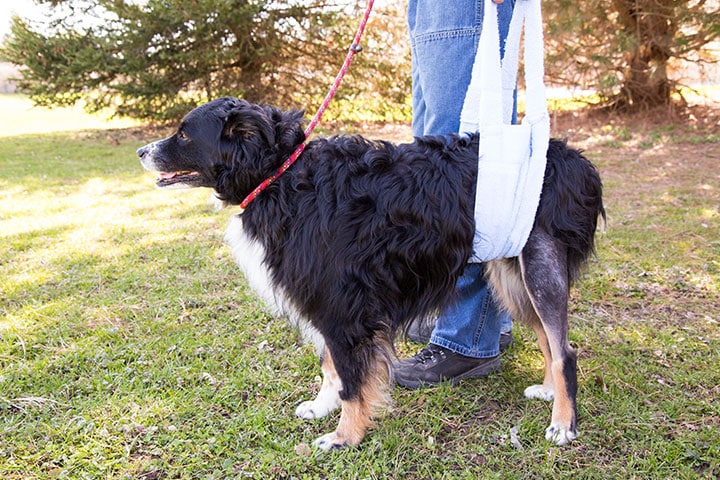
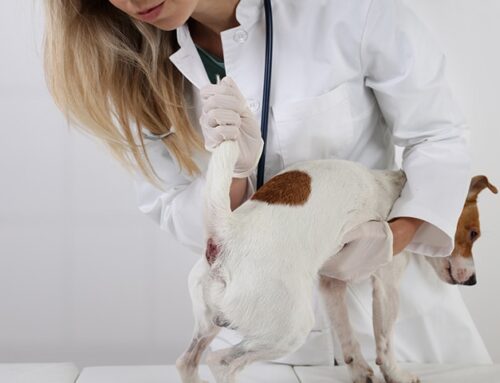






Leave A Comment